
Pragmatics Utterance Meaning 楚军外国语学院
Utterance Meaning 楚军 外国语学院 Pragmatics
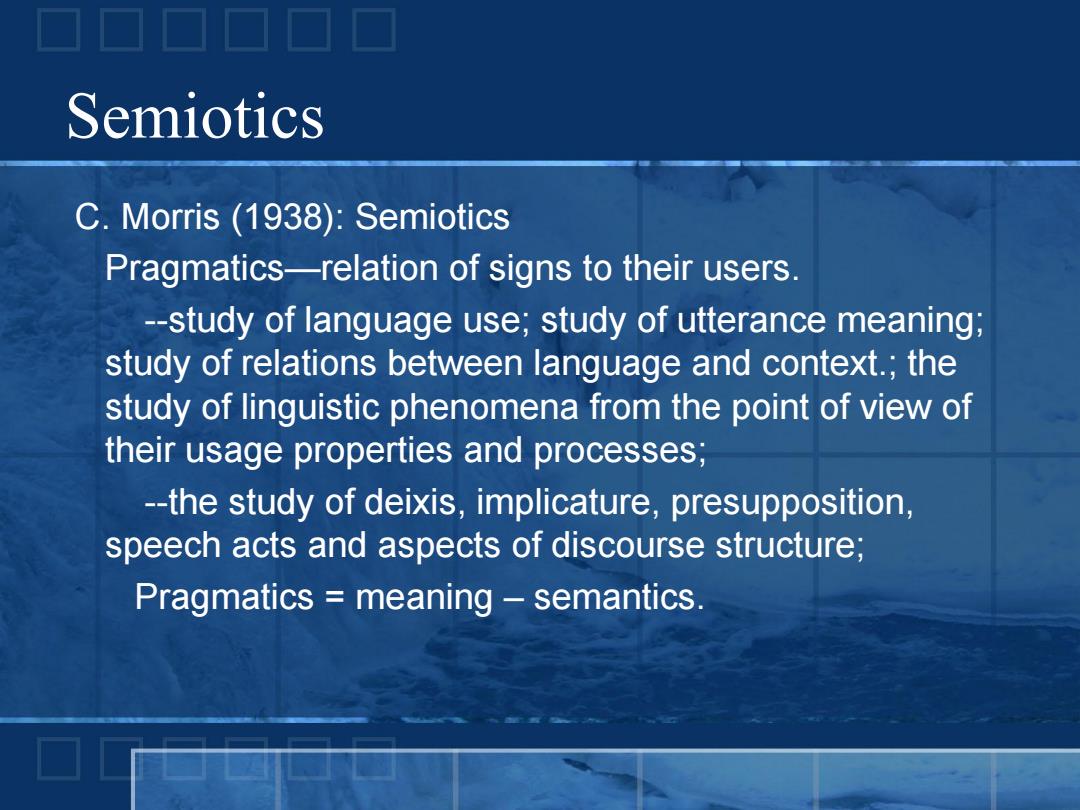
Semiotics C.Morris (1938):Semiotics Pragmatics-relation of signs to their users. --study of language use;study of utterance meaning; study of relations between language and context.;the study of linguistic phenomena from the point of view of their usage properties and processes; --the study of deixis,implicature,presupposition, speech acts and aspects of discourse structure; Pragmatics meaning-semantics
Semiotics C. Morris (1938): Semiotics Pragmatics—relation of signs to their users. --study of language use; study of utterance meaning; study of relations between language and context.; the study of linguistic phenomena from the point of view of their usage properties and processes; --the study of deixis, implicature, presupposition, speech acts and aspects of discourse structure; Pragmatics = meaning – semantics
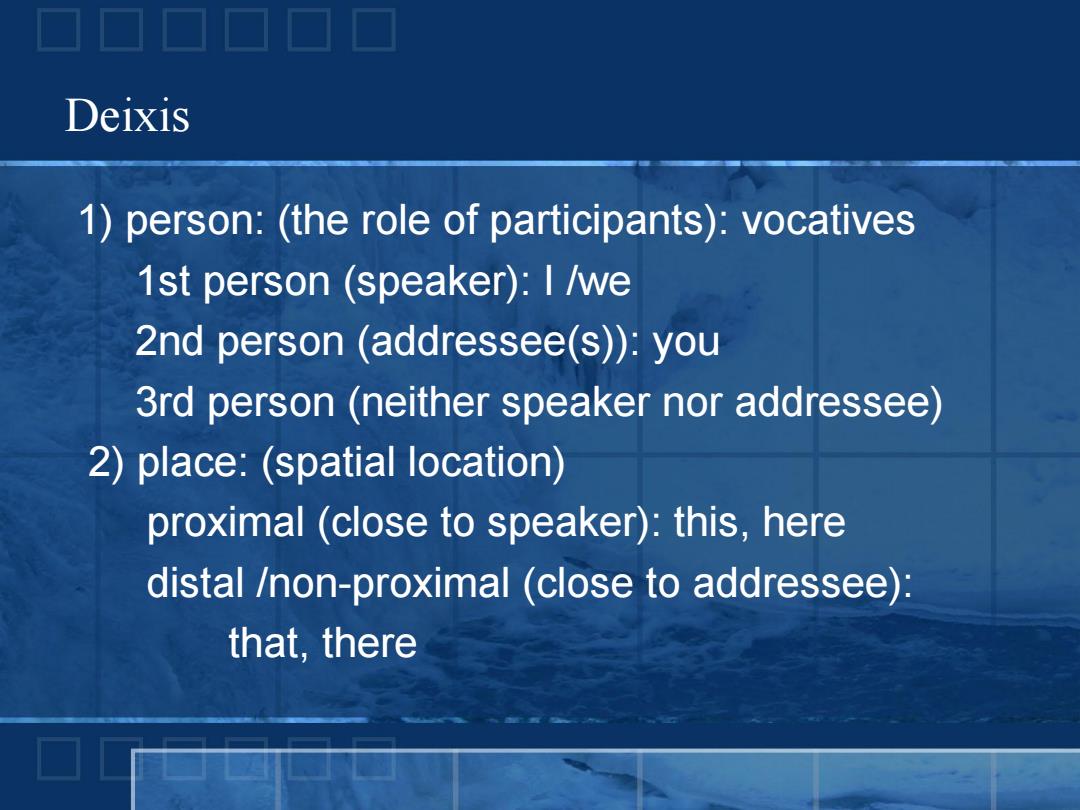
Deixis 1)person:(the role of participants):vocatives 1st person (speaker):I /we 2nd person (addressee(s)):you 3rd person (neither speaker nor addressee) 2)place:(spatial location) proximal (close to speaker):this,here distal /non-proximal (close to addressee): that,there
Deixis 1) person: (the role of participants): vocatives 1st person (speaker): I /we 2nd person (addressee(s)): you 3rd person (neither speaker nor addressee) 2) place: (spatial location) proximal (close to speaker): this, here distal /non-proximal (close to addressee): that, there
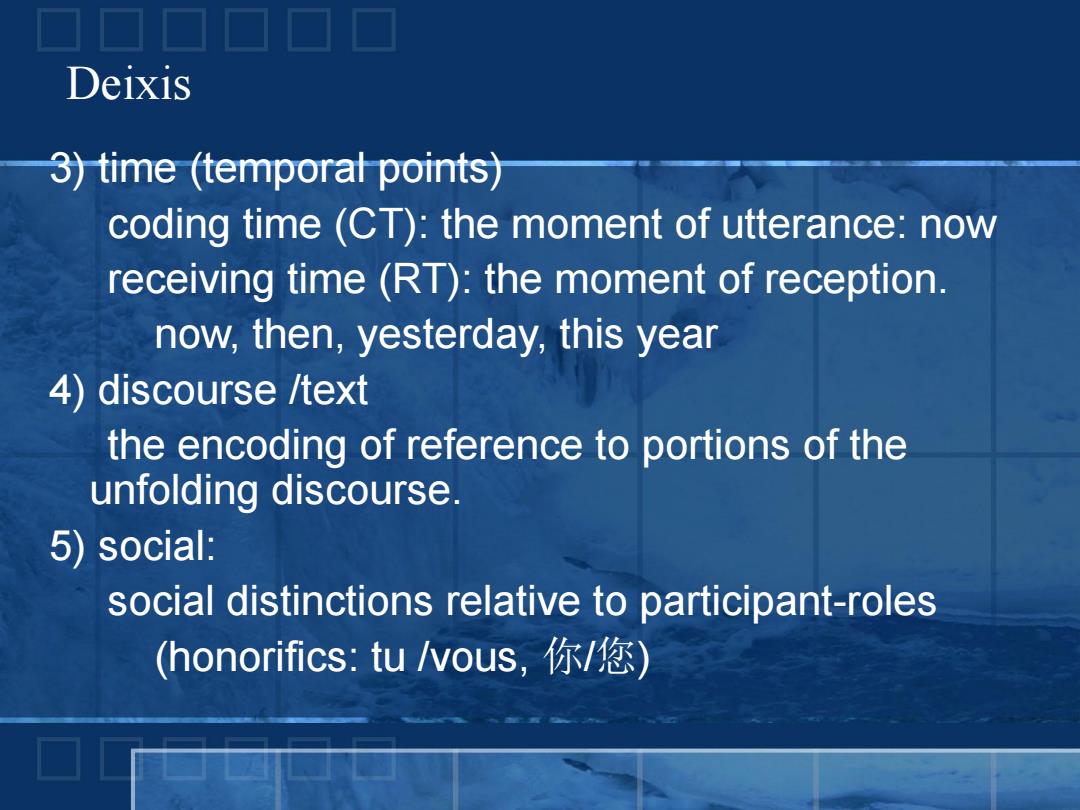
Deixis 3)time (temporal points) coding time (CT):the moment of utterance:now receiving time(RT):the moment of reception. now,then,yesterday,this year 4)discourse /text the encoding of reference to portions of the unfolding discourse. 5)social: social distinctions relative to participant-roles (honorifics:tu /vous,你/您)
Deixis 3) time (temporal points) coding time (CT): the moment of utterance: now receiving time (RT): the moment of reception. now, then, yesterday, this year 4) discourse /text the encoding of reference to portions of the unfolding discourse. 5) social: social distinctions relative to participant-roles (honorifics: tu /vous, 你/您)
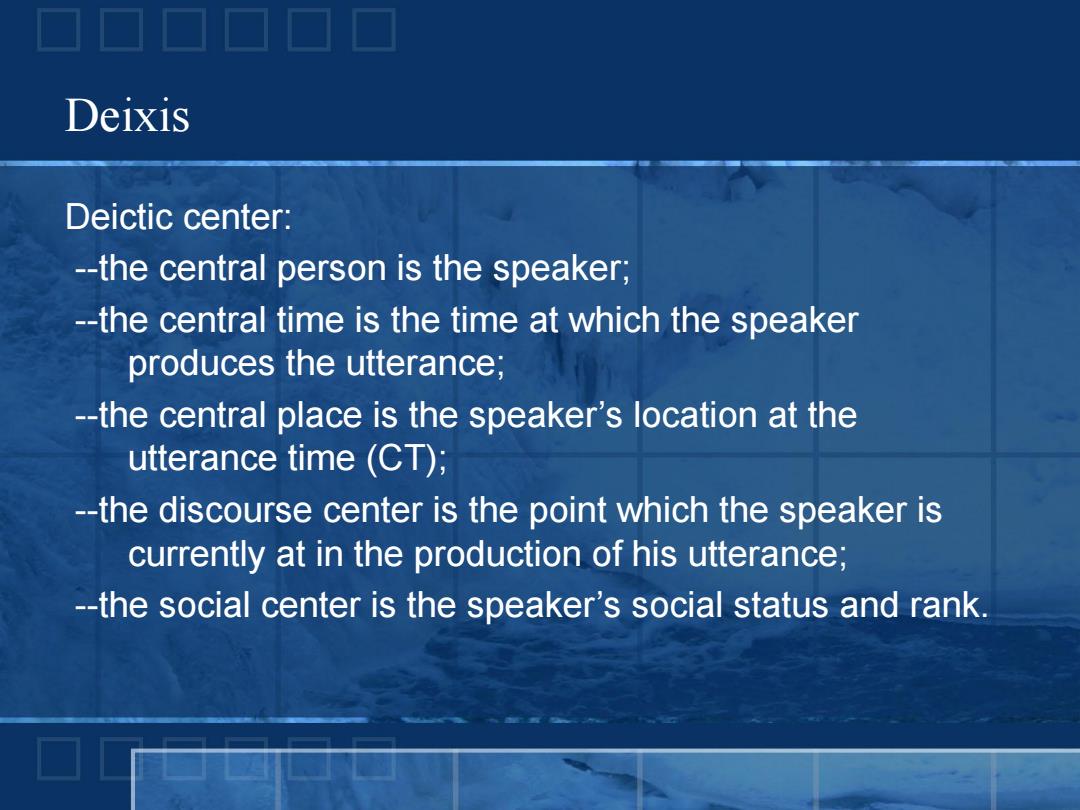
Deixis Deictic center: --the central person is the speaker; --the central time is the time at which the speaker produces the utterance; --the central place is the speaker's location at the utterance time (CT); --the discourse center is the point which the speaker is currently at in the production of his utterance; --the social center is the speaker's social status and rank
Deixis Deictic center: --the central person is the speaker; --the central time is the time at which the speaker produces the utterance; --the central place is the speaker’s location at the utterance time (CT); --the discourse center is the point which the speaker is currently at in the production of his utterance; --the social center is the speaker’s social status and rank
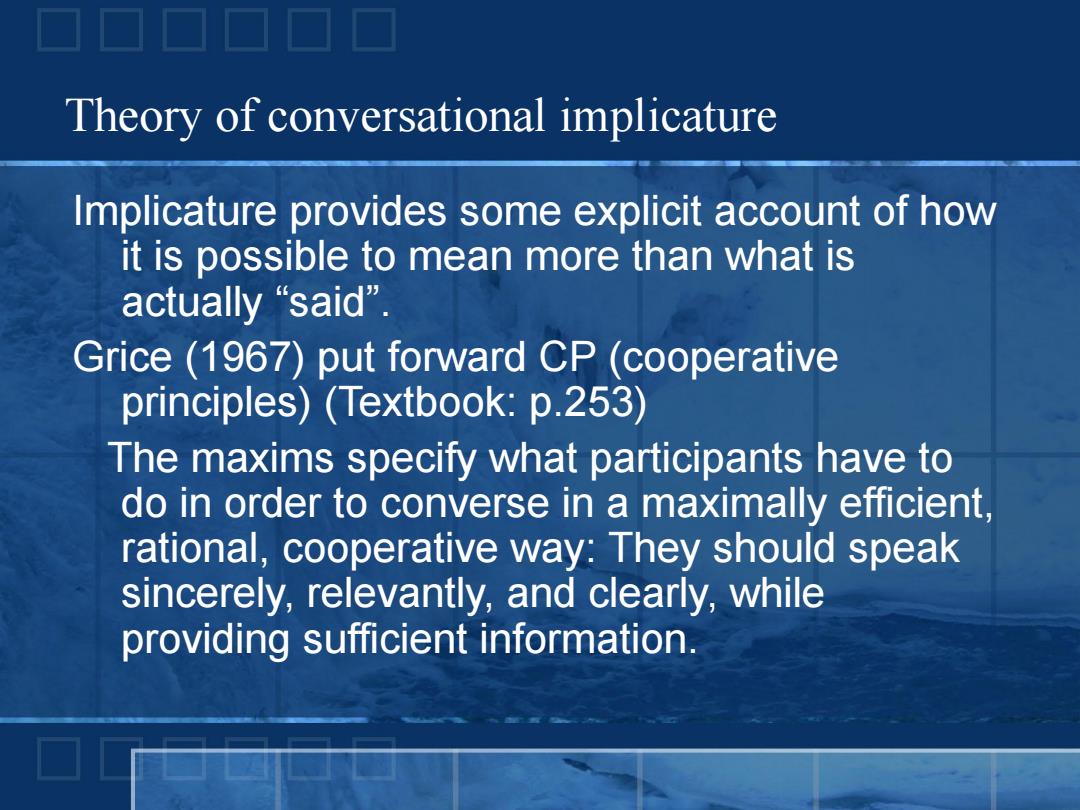
Theory of conversational implicature Implicature provides some explicit account of how it is possible to mean more than what is actually“said". Grice(1967)put forward CP (cooperative principles)(Textbook:p.253) The maxims specify what participants have to do in order to converse in a maximally efficient rational,cooperative way:They should speak sincerely,relevantly,and clearly,while providing sufficient information
Theory of conversational implicature Implicature provides some explicit account of how it is possible to mean more than what is actually “said”. Grice (1967) put forward CP (cooperative principles) (Textbook: p.253) The maxims specify what participants have to do in order to converse in a maximally efficient, rational, cooperative way: They should speak sincerely, relevantly, and clearly, while providing sufficient information
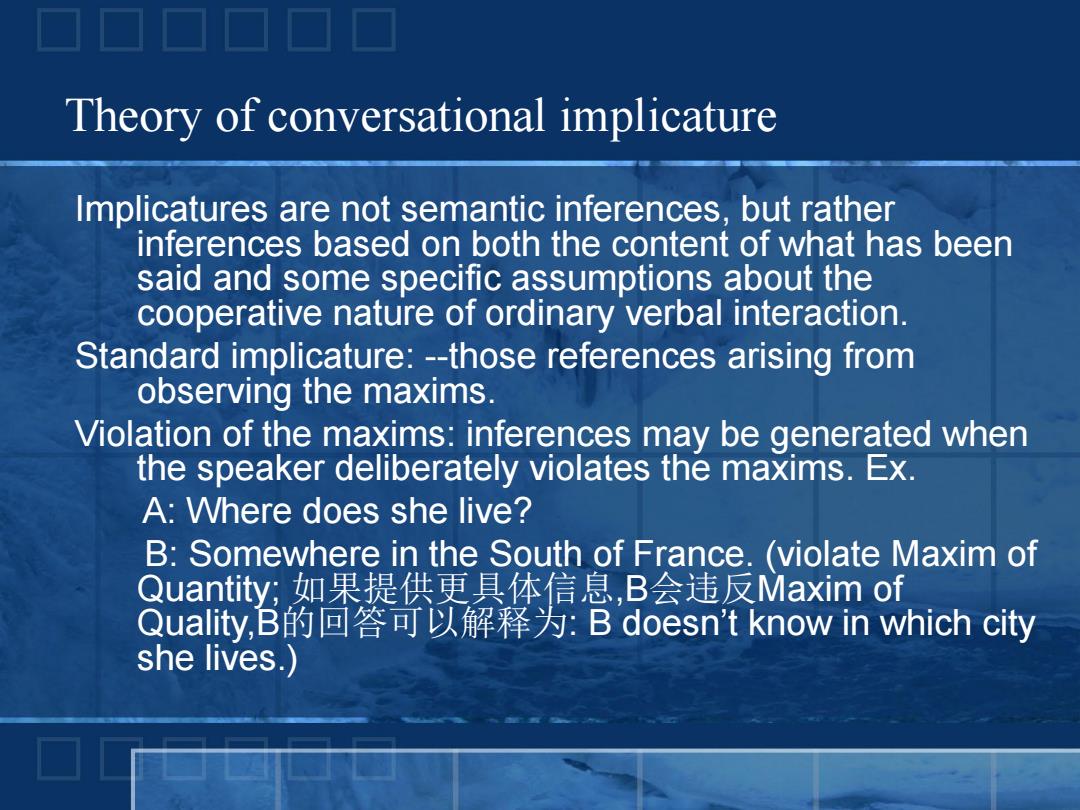
Theory of conversational implicature Implicatures are not semantic inferences,but rather inferences based on both the content of what has been said and some specific assumptions about the cooperative nature of ordinary verbal interaction. Standard implicature:--those references arising from observing the maxims. Violation of the maxims:inferences may be generated when the speaker deliberately violates the maxims.Ex. A:Where does she live? B:Somewhere in the South of France.(violate Maxim of Quantity;如果提供更具体信息,B会违反Maxim of Quality,B的回答可以解释为:B doesn't know in which city she lives.)
Theory of conversational implicature Implicatures are not semantic inferences, but rather inferences based on both the content of what has been said and some specific assumptions about the cooperative nature of ordinary verbal interaction. Standard implicature: --those references arising from observing the maxims. Violation of the maxims: inferences may be generated when the speaker deliberately violates the maxims. Ex. A: Where does she live? B: Somewhere in the South of France. (violate Maxim of Quantity; 如果提供更具体信息,B会违反Maxim of Quality,B的回答可以解释为: B doesn’t know in which city she lives.)
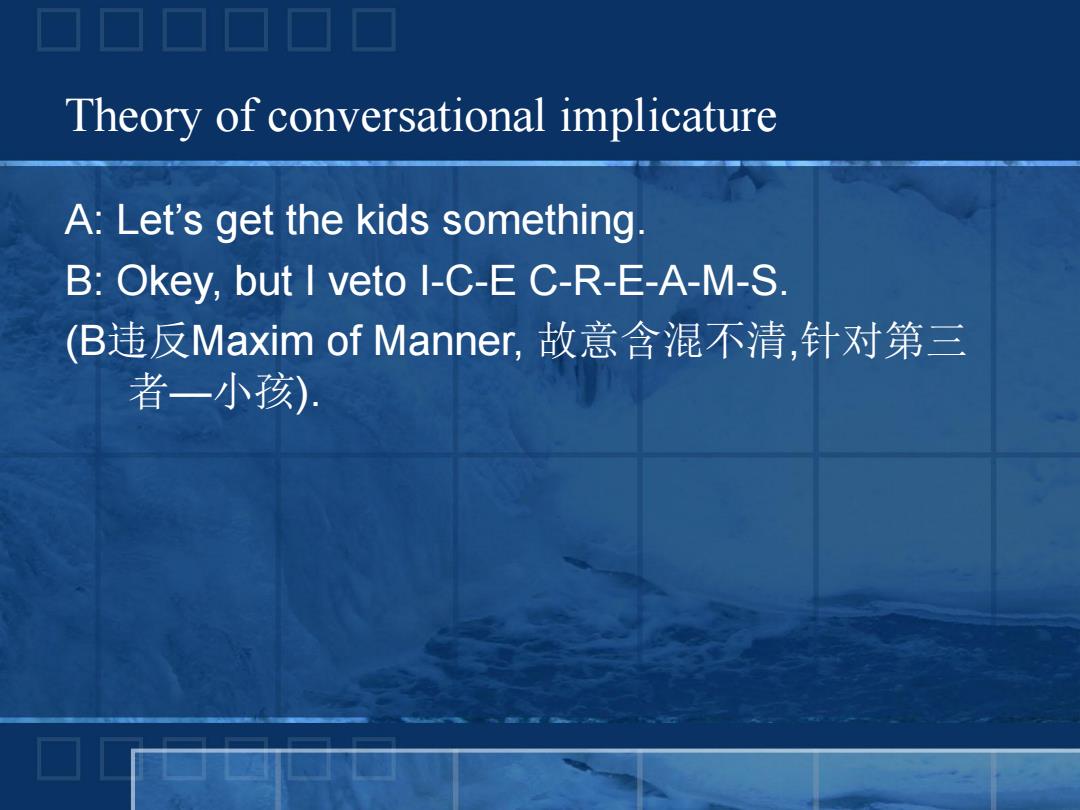
Theory of conversational implicature A:Let's get the kids something. B:Okey,but I veto I-C-E C-R-E-A-M-S. (B违反Maxim of Manner,.故意含混不清,针对第三 者一小孩)
Theory of conversational implicature A: Let’s get the kids something. B: Okey, but I veto I-C-E C-R-E-A-M-S. (B违反Maxim of Manner, 故意含混不清,针对第三 者—小孩)
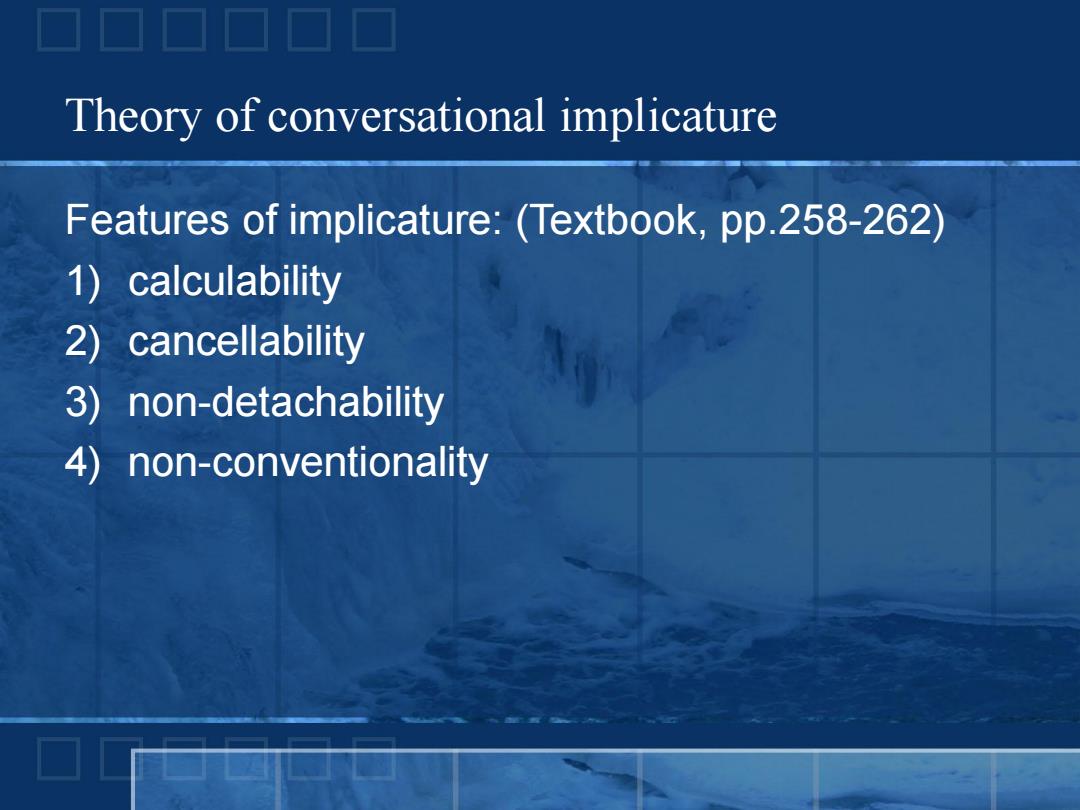
Theory of conversational implicature Features of implicature:(Textbook,pp.258-262) 1)calculability 2)cancellability 3)non-detachability 4) non-conventionality
Theory of conversational implicature Features of implicature: (Textbook, pp.258-262) 1) calculability 2) cancellability 3) non-detachability 4) non-conventionality
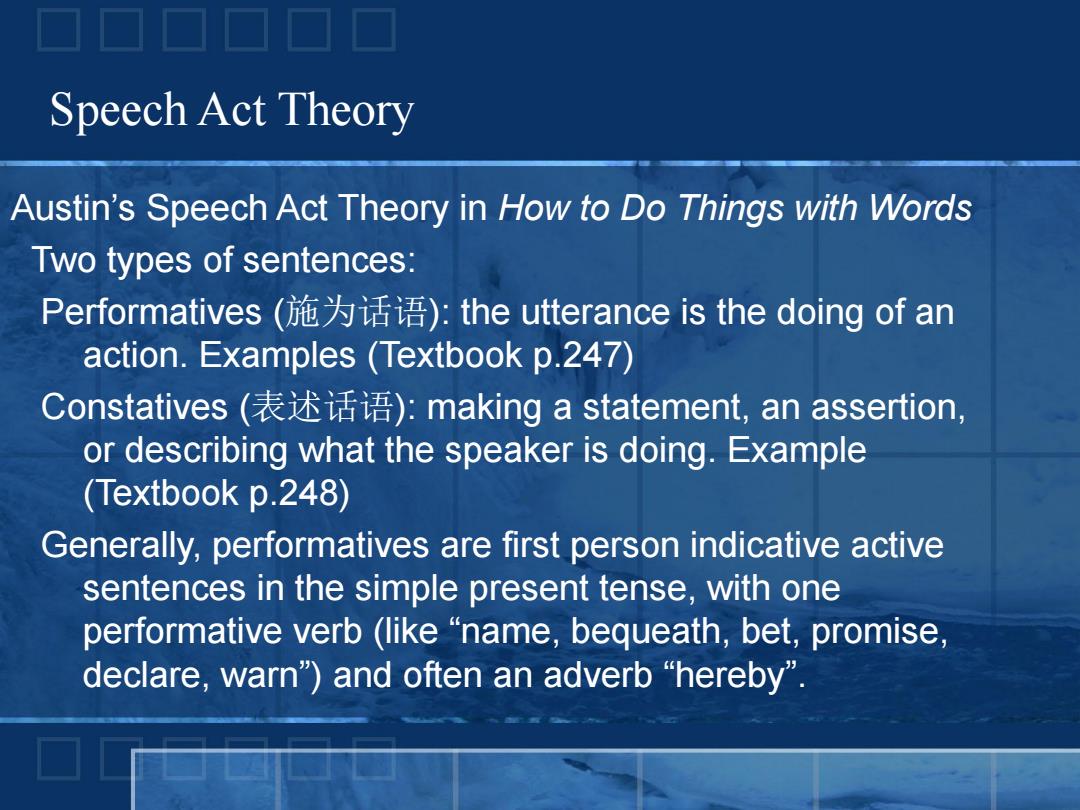
Speech Act Theory Austin's Speech Act Theory in How to Do Things with Words Two types of sentences: Performatives(施为话语):the utterance is the doing of an action.Examples (Textbook p.247) Constatives(表述话语):making a statement,an assertion, or describing what the speaker is doing.Example (Textbook p.248) Generally,performatives are first person indicative active sentences in the simple present tense,with one performative verb (like "name,bequeath,bet,promise, declare,warn")and often an adverb“hereby
Speech Act Theory Austin’s Speech Act Theory in How to Do Things with Words Two types of sentences: Performatives (施为话语): the utterance is the doing of an action. Examples (Textbook p.247) Constatives (表述话语): making a statement, an assertion, or describing what the speaker is doing. Example (Textbook p.248) Generally, performatives are first person indicative active sentences in the simple present tense, with one performative verb (like “name, bequeath, bet, promise, declare, warn”) and often an adverb “hereby